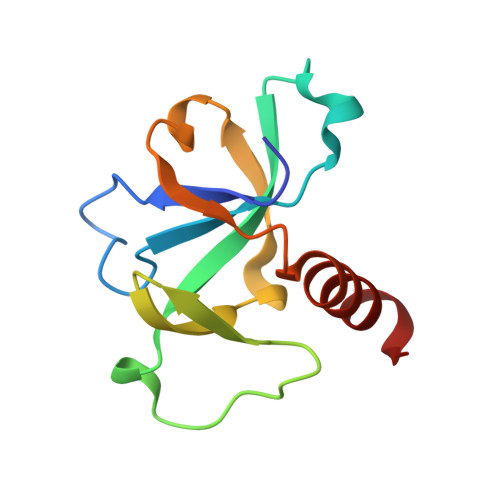Energetic basis of uncoupling folding from binding for an intrinsically disordered protein.
Drobnak, I., De Jonge, N., Haesaerts, S., Vesnaver, G., Loris, R., Lah, J.(2013) J Am Chem Soc 135: 1288-1294
- PubMed: 23289531
- DOI: https://doi.org/10.1021/ja305081b
- Primary Citation of Related Structures:
3TCJ - PubMed Abstract:
Intrinsically disordered proteins (IDPs) are proteins that lack a unique three-dimensional structure in their native state. Many have, however, been found to fold into a defined structure when interacting with specific binding partners. The energetic implications of such behavior have been widely discussed, yet experimental thermodynamic data is scarce. We present here a thorough thermodynamic and structural study of the binding of an IDP (antitoxin CcdA) to its molecular target (gyrase poison CcdB). We show that the binding-coupled folding of CcdA is driven by a combination of specific intramolecular interactions that favor the final folded structure and a less specific set of intermolecular contacts that provide a desolvation entropy boost. The folded structure of the bound IDP appears to be defined largely by its own amino acid sequence, with the binding partner functioning more as a facilitator than a mold to conform to. On the other hand, specific intermolecular interactions do increase the binding affinity up to the picomolar range. Overall, this study shows how an IDP can achieve very strong and structurally well-defined binding and it provides significant insight into the molecular forces that enable such binding properties.
Organizational Affiliation:
Department of Physical Chemistry, Faculty of Chemistry and Chemical Technology, University of Ljubljana, Askerceva 5, 1000 Ljubljana, Slovenia.
















